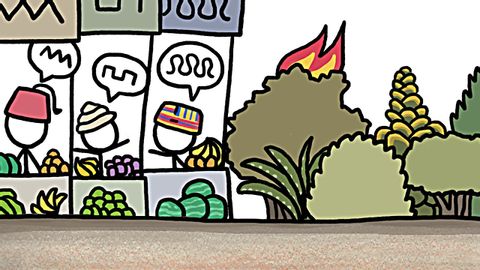
Subtitles & vocabulary
Why Poor Places Are More Diverse
00
Victor posted on 2015/02/08Save
Video vocabulary
pattern
US /ˈpætən/
・
UK /'pætn/
- Noun (Countable/Uncountable)
- Model to follow in making or doing something
- Colors or shapes which are repeated on objects
- Transitive Verb
- To copy the way something else is made
- To decorate with a pattern.
A2TOEIC
More necessarily
US /ˌnɛsɪˈsɛrəli, -ˈsɛr-/
・
UK /ˌnesəˈserəli/
- Adverb
- In a way that is needed/required/is unavoidable
A2TOEIC
More society
US /səˈsaɪɪti/
・
UK /sə'saɪətɪ/
- Noun (Countable/Uncountable)
- A group who meet to share values or interests
- Group of people living together
A2TOEIC
More plenty
US /ˈplɛnti/
・
UK /'plentɪ/
- Pronoun
- When there is not too little of something; a lot
- Uncountable Noun
- A large or sufficient amount or quantity; abundance.
- A lot of something
A2
More Use Energy
Unlock All Vocabulary
Unlock pronunciation, explanations, and filters
